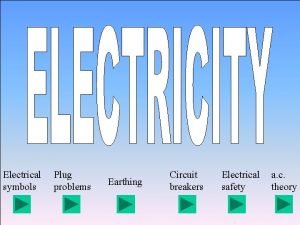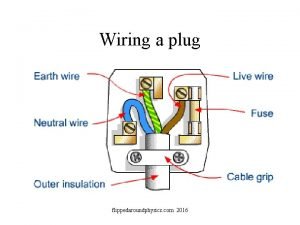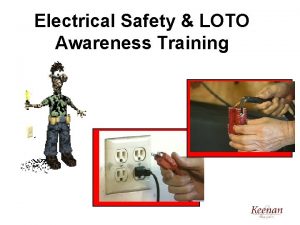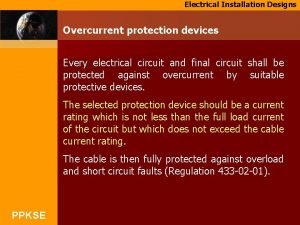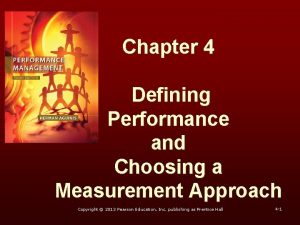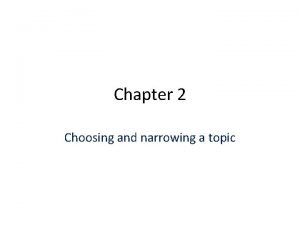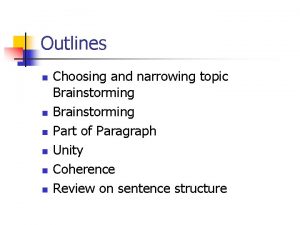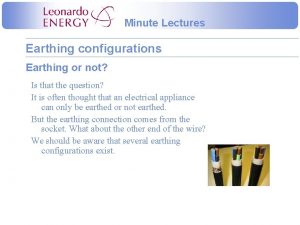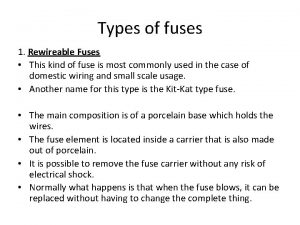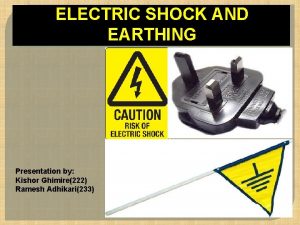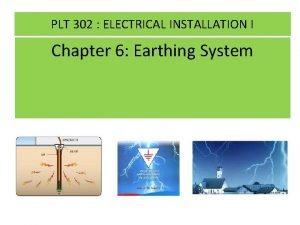explaining how fuses work fuses and earthing choosing





























- Slides: 29

explaining how fuses work fuses and earthing choosing the correct fuse alternating current(H) resources

previous next

How does a fuse work? We should draw a fuse like this to show that the fuse is a thin strand of wire which melts easily if too much current flows ( a fault). previous next

battery switch Short circuit fuse lamp previous next

battery switch Short circuit (fault) fuse lamp previous next

HOW FUSES WORK Too much current flowing causes the fuse wire to This makes a gap and breaks the _____ so that no _____ flows. The job of a fuse is to protect the device it is connected to and to prevent electrical _______ from developing. • • • fault occurs large current flows heats and melts the fuse breaks the circuit stops the current flowing previous next

Answers Melt Circuit Current Fire

previous next

Step by step analysis for no earth 1. The fault develops (live wire touches the metal case) 2. The metal case becomes LIVE 3. A teacher wants to make a cup of coffee 4. OUCH! previous next

Step by step analysis (with the case earthed) 1. The fault develops (live wire touches the metal case) previous next

Step by step analysis (with the case earthed) 1. The fault develops (live wire touches the metal case) 2. Earth wire provides a low resistance path for current so a large current flows 3. The fuse melts and breaks the circuit 4. Electric current stops flowing and the live wire is now safe previous next

Step by step analysis (with the case earthed) 1. The fault develops (live wire touches the metal case) 2. Earth wire provides a low resistance path for current so a large current flows 3. The fuse melts and breaks the circuit 4. Electric current stops flowing and the live wire is now safe previous next

Metal wire touches the metal case This could cause a fatal shock previous Case becomes LIVE (230 volts, a. c. ) Kettles with a plastic case don’t need to be earthed next

Good earthing provides an easy path for the current The low resistance draws a big current previous next We call this easy path a low resistance path

The large current flows through the fuse It is vital that the fuse is the weakest link in the circuit previous next Large current will cause heating

The fuse melts and makes a gap in the circuit The metal case is not live any more previous The current stops flowing The fuse has protected the kettle and us next

previous next

Choosing the correct fuse Find out the current rating for the device Choose the fuse which is just above this current If the fuse is the same as the current rating you must choose the next fuse up previous next

Choosing the correct fuse Fuses available 2, 3, 5, 8, 10 and 13 Amp Device Current rating Correct fuse lamp 0. 25 A kettle 10 A TV 0. 5 A drill 4 A

Choosing the correct fuse Fuses available 2, 3, 5, 8, 10 and 13 Amp Device Current rating Correct fuse steam iron 8 A Dyson 6 A fan 3 A previous next

Choosing the correct fuse Fuses available 2, 3, 5, 8, 10 and 13 Amp Device Current rating lamp 0. 25 A kettle 10 A TV 0. 5 A drill 4 A steam iron 8 A Dyson 6 A fan 3 A previous next Correct fuse 2 A 13 A 2 A 5 A 10 A 8 A 5 A

previous next

The current changes direction (a. c. ) The live wire goes above and below the axis The neutral remains at 0 Volts all the time p. d. (volt) previous next

The live pd (voltage) goes above and below the axis The pd (voltage) changes between + and – values This only happens for the live wire p. d. (volt) + + _ previous next + _

The mains voltage is 230 Volts ac Only the live wire alternates (changes) The neutral wire stays at 0 volts +230 Volts -230 Volts p. d. (volt) + + _ previous next + _

Mains electricity is alternating current a. c. Mains potential difference is 230 volts 50 cycles per second (frequency is 50 Hertz) Normal current is about 10 Amps If too much current flows the fuse melts previous next

A D B E C F Draw these oscilloscope traces into you books Match the trace letter traces to the correct number 1 earth voltage 3 Small ac supply 2 3 Volt battery 4 large ac supply 5 1. 5 V battery 6 flat battery

A 2 3 Volt battery 5 1. 5 V battery B D 6 flat battery E 4 large ac supply C 1 earth voltage 3 Small ac supply F

previous next
 Circuit breaker electrical symbol
Circuit breaker electrical symbol Explain the objective of earthing
Explain the objective of earthing Pe earth
Pe earth Global earthing system
Global earthing system Hgc3
Hgc3 Vg
Vg Earthing wire
Earthing wire Alpena biorefinery
Alpena biorefinery Fuses and circuit breakers are intended primarily for the
Fuses and circuit breakers are intended primarily for the Explaining hydroponics systems
Explaining hydroponics systems Explaining voltage
Explaining voltage Explaining how something works
Explaining how something works Plummet in graph
Plummet in graph A pamphlet explaining how an unborn child
A pamphlet explaining how an unborn child Explaining deviance biological perspect
Explaining deviance biological perspect They say i say moves that matter in academic writing
They say i say moves that matter in academic writing Quote starters
Quote starters Behavioural approach to treating phobias
Behavioural approach to treating phobias Explaining patterns hots
Explaining patterns hots Orgasm
Orgasm Saira has a fear of cats
Saira has a fear of cats Aircraft hydraulic system
Aircraft hydraulic system Bs 3036 fuse advantages and disadvantages
Bs 3036 fuse advantages and disadvantages Fluke 773 vs 789
Fluke 773 vs 789 Defining performance and choosing a measurement approach
Defining performance and choosing a measurement approach Approaches to measuring performance
Approaches to measuring performance Contoh layout usaha
Contoh layout usaha Choosing and narrowing a topic
Choosing and narrowing a topic Choosing and narrowing a topic
Choosing and narrowing a topic Chapter 4 work and energy section 1 work and machines
Chapter 4 work and energy section 1 work and machines
